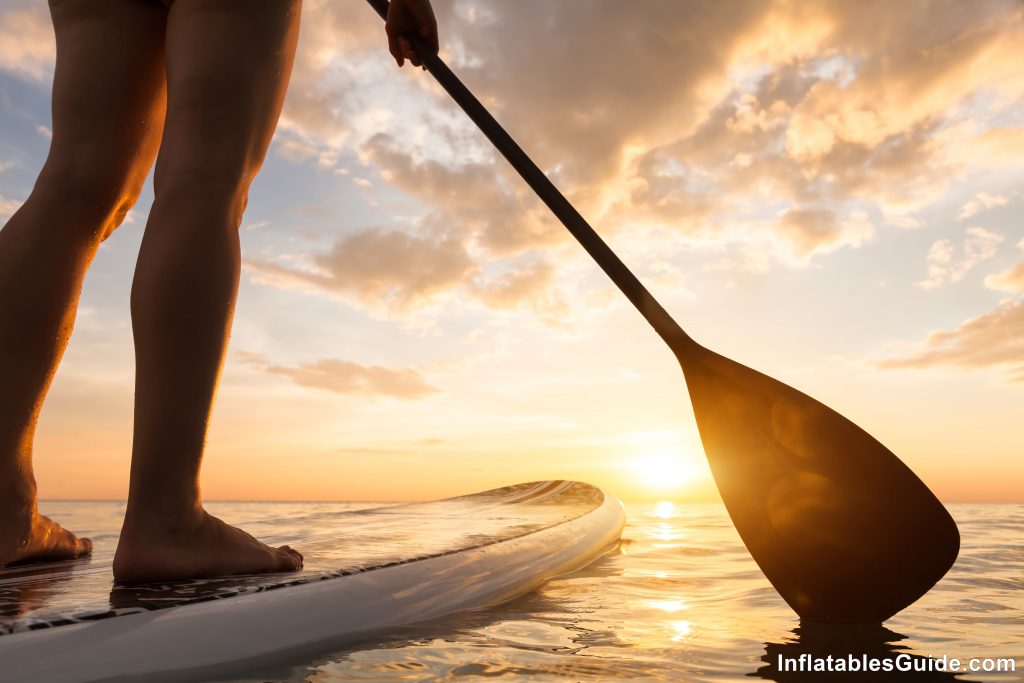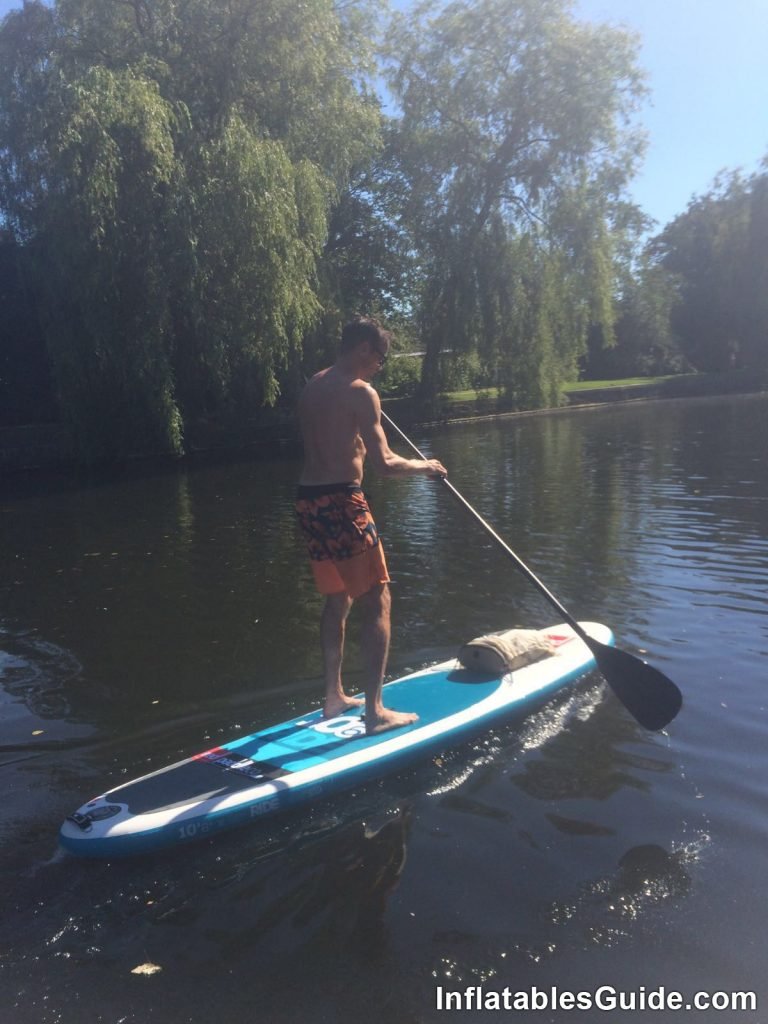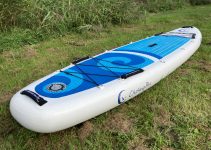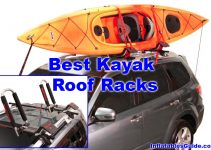As an Amazon Associate, I earn from qualifying purchases. This is without any additional costs for the buyer but does support me in maintaining my website.
 Are you starting to get addicted to standup paddle boarding as well? This relatively new sport is growing so fast and many manufacturers are making a really good iSUP nowadays. If you’re looking to get your own board, read our beginners guide to buying your first SUP and have all the fun on the water!
Are you starting to get addicted to standup paddle boarding as well? This relatively new sport is growing so fast and many manufacturers are making a really good iSUP nowadays. If you’re looking to get your own board, read our beginners guide to buying your first SUP and have all the fun on the water!
Have you ever bought clothing that was too big? Or been spontaneous and bought some newfangled gadget – only to realize it’s way too advanced for you?
Both these situations can end in disappointment for the same reason. We don’t always take the time to figure out if what we’re buying is right for us.
We here at InflatablesGuide.com care about our SUP riders. We love being out on the water, and we love hearing about your great experiences!
If you’re only interested in our top 5 beginner inflatable standup paddleboards (iSUP), check out these:
 So if you want to know more about buying your first SUP board, read this article further! We don’t want you to be buying a board too small or too big. We don’t want to hear you gave up after the first go because someone sold you an impossible to ride racing board. We want you to be a SUPerior (ha-ha) rider.
So if you want to know more about buying your first SUP board, read this article further! We don’t want you to be buying a board too small or too big. We don’t want to hear you gave up after the first go because someone sold you an impossible to ride racing board. We want you to be a SUPerior (ha-ha) rider.
From here we talk about shape, size, type, and also the paddle. We give you some suggestions as well as loads of encouragement. Once you’ve got a board, you should check out this superb guide to basic SUP skills!
If you already have a bit of an idea about SUP’s but need some in-depth knowledge on the smaller details – this may not be the article for you and you better check out our other SUP articles.
Choosing Your Standup Paddle Board
 Now you hopefully have a bit of an idea of where you’ll be paddling. As a beginner, as we encourage you to start out on flat water. Rivers or lakes are best!
Now you hopefully have a bit of an idea of where you’ll be paddling. As a beginner, as we encourage you to start out on flat water. Rivers or lakes are best!
At this point, we don’t suggest you need to worry about there being a better board for rivers or lakes. The only difference is if you are fighting currents, which you shouldn’t be when you are beginning! Paddle away from the mouth of rivers and check your tides!
Either way, the commonly suggested and most ideal style of SUP for beginners is a big one! Right now you’re thinking “Yeah thanks for that”. Honestly, you’ll try to get sold this and that when you are a beginner. The best way to go about the overwhelming choice is to choose a big board with lots of volumes. Stability is your best friend when you start out. If you were falling off every two minutes, the novelty would wear off very quickly.
A board that’s 10ft+, above 31” wide, and at least 140L volume. These numbers are averages. These averages are based on someone with an approx height of 175cm, weight of 70kgs, and beginner level. It can vary depending on your height and weight. If you are a few kilos or cms on either side of that, I wouldn’t worry. If you are worried, a simple equation will ease your mind.

The volume and length of your board are important. Imagine a whale attempting to stay afloat on a twig. Or the effort it would require a shrimp to paddle a fully grown pine tree. Neither the whale nor the shrimp are going to have fun or be able to control their vessels, are they?
What type of SUP is best suited? What you’ll most likely be looking at is what the SUP community refer to as All-rounders or Touring/Cruiser boards. They are wide for stability and long for speed/momentum in flat water.
Other SUP’s such as the Fanatic Allwave are also wide and have plenty of volumes. It, however, has a different fin setup. All-rounders/touring boards predominantly have a large middle fin. Either by itself (single fin) or with two smaller side fins (tri-fin). The iRocker Cruiser 10’6″, for instance, is 33″ wide, has a weight capacity of 400 lbs, and has a tri-fin setup (2 small side fins and 1 removable large center fin). Look for the detail of a large center fin in your purchase; it’ll be immensely helpful.
The large middle fin acts as a rudder, seeing as you can’t move it around as you would on a boat, this fin helps you tracking straight. You’ll notice on the Allwave, as it’s designed to carve up the surf, the fins are all small. A three fin setup like this is called a “thruster” setup. Thrusters provide the maneuverability you need to turn your board into and out of waves.
Inflatable or hardboard? It’s totally up to you
Hard boards are a reasonable option if you intend only to use your SUP in one location and are storing it there. You won’t waste time to inflate your board every time you want to go out.
Though, unless the reason you are sticking in one place is that there isn’t anywhere else to go nearby, you should be exploring! The Inflatable SUP market is booming, and because of that, we see high-quality boards that are just as robust as hard boards. It’s easy to transport inflatables, and we like to think of the inflate process is the perfect warm-up for your arms.
Okay, now you’re overwhelmed. How on earth are you going to remember all that? Good news, you don’t have to! Because I’ve made a list of boards here for you to look at 🙂
- iRocker Cruiser 10’6″
- Hydroforce WaveEdge 10’2″
- Gili Sports Air 10’6
- Sroka Malibu 10’6
- Thurso Surf Waterwalker
SUP: Anything Else?
Yes. Of course! It’s better to be overly helpful in our opinion. So letting you in on a secret many companies won’t.
Your Choice of Paddle is Crucial
The paddle you may be offered as part of your board’s purchase could potentially be hindering.
Sometimes manufacturers include a “total package” option which includes a paddle, pump, and backpack for a relatively small additional price. Most of the time these paddles are made of fiberglass but occasionally the “package” paddles are made of cheap plastic and bad quality. If you’re lucky, the package includes a lightweight carbon fiber SUP paddle.
A quick checklist of things to look for whether your paddle is inclusive or a separate purchase:
- Lightweight – Fibreglass or carbon fiber over aluminum or plastic. You just want something light to play with while you are perfecting your technique.
- Adjustable – If you are sharing the paddle, being able to adjust it to your optimum height is important. (I’ll expand on that further down)
- Quality – You want the head of the paddle to be indestructible. It’s not unusual that you’ll need to use your paddle to push yourself off or away from objects. Some paddles have a rubber edging on the blade; they’re the best! Alternatively, you can purchase the rubber edging and attach it yourself. Alternatively, you can purchase the rubber edging and attach it yourself.
- Floatable? A floating paddle is practical for obvious reasons.
The Final Say
This a guide for a beginner’s board choice. As you become more experienced, it’s not unlikely you’ll want to buy another SUP and a better (carbon fiber) paddle. You’ll pay attention to different details and specifications. For now, having a board you can balance on easily so you can start your SUP addiction – I mean experience – is what matters.
Like anything in life – when you are trying something for the first time, it should be fun. Even if you are having trouble balancing, staying straight, or building momentum, remember to smile! It isn’t about being the best straight away, only about having the best time!
Welcome to the SUP world! (It’s a wondrous place!)


